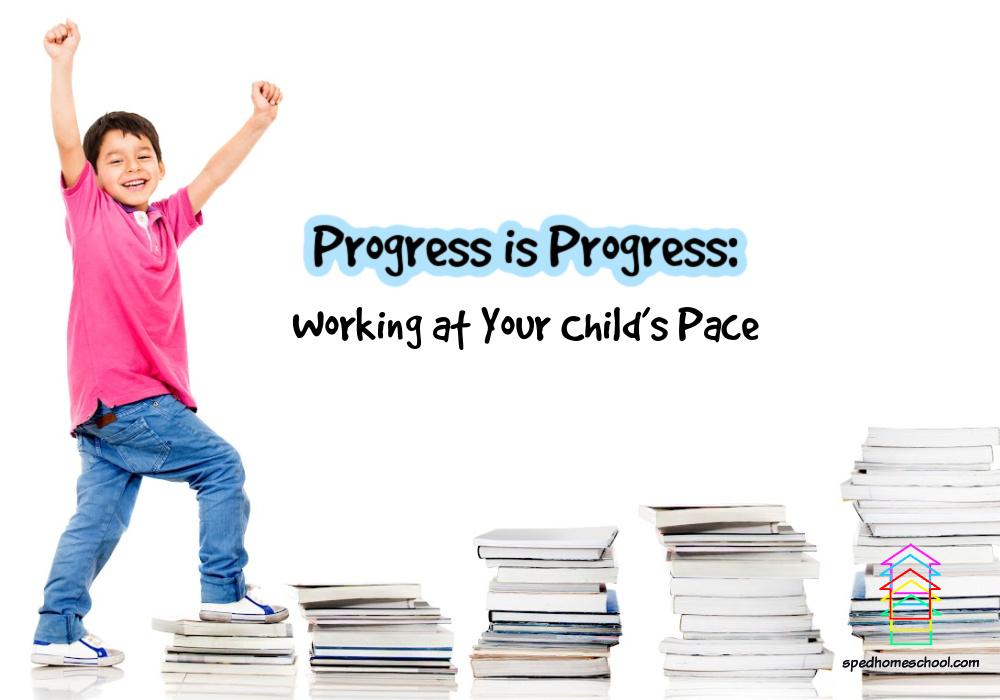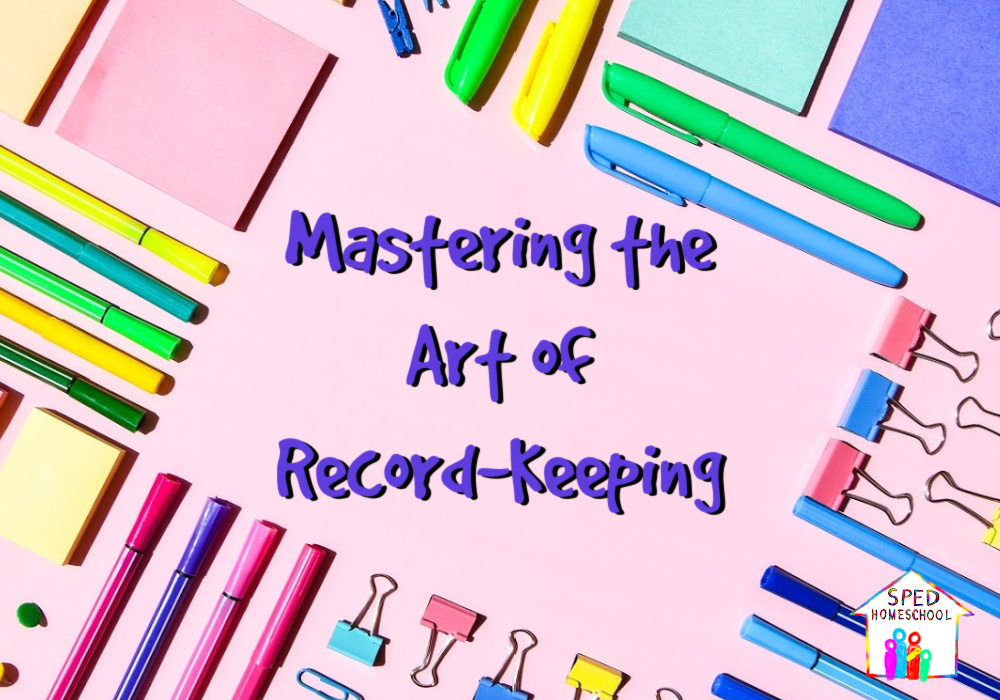
by Cynthia Heren from Inside Our Normal, SPED Homeschool Blogging Partner
When we uncovered our child’s disability, it was because we realized they weren’t meeting the suggested age-based milestones. In our case, we were still spoon feeding them yogurt and applesauce. We kept telling ourselves as parents “It’s ok, they are only 2…” but that excuse wore thin as they were getting ready to turn 3 in a couple of months, so after consulting with our pediatrician we began Occupational Therapy and Speech Therapy for our child.
For our outside the box kids, learning doesn’t always happen at the same pace as their peers. But with strong support, they can make the same progress in their own time. The child I mentioned above entered Pre-K with an IEP that focused on support in fine motor skills and sensory needs. When we had them reevaluated in 3rd grade after moving across the country and a few years of homeschool, their new IEP reflected struggles focusing and social skills.
Fast forward a few years and that same child is now a preteen. Their strengths and challenges have changed with time. Progress has been made in some areas, and new challenges have arisen. In our homeschool we can fully accommodate their needs and provide support for the best ways to help them grow. Fine Motor skills are still a struggle but we meet the need by having primary-ruled paper always available for written assignments and the computer available to type on, instead of being overwhelmed by small lines on a worksheet. This accommodation is easy because we homeschool and don’t have to think about 30 students. We only have to consider what is best for one. Our child had grown and changed in their own time! Take heart. Working at your child’s pace is always the right choice.
3 reminders for working at your child’s pace
#1 – Ignore grade levels and meet them where they are at
Many times, our special kids excel in specific areas of learning but struggle in other areas. It is important to look for homeschool materials that can meet your child where they are at instead of where they “should be” based on their age. Trusting the placement tests of any program you are considering is valuable and will help you find the right fit for your child’s needs in that skill area. I am homeschooling three children and only one of them is on the same grade level for all subjects. The other two students fall across at least two grade levels in their materials.
#2 – Celebrate their progress
No matter what level your student is working at when they finish a project or workbook, take time to celebrate! It can be as simple as a dance party using songs from the radio or a special trip for ice cream. Celebrate all progress, however that looks at your child’s pace. They may never catch up with their age level peers but since they are in a classroom of one, they are never behind.
#3 – Your homeschool is uniquely yours!
The most important thing to remember when homeschooling Outside the Box kids is the flexibility it gives you to meet their needs. Stop looking at other homeschoolers you know and don’t compare your homeschool to theirs. Your homeschool will look unique to your family and the needs of your student, and that’s how it should be. Likewise, their homeschool will be unique to their family and learning needs. When you focus on finding the perfect fit for your students, your students will thrive!
When we parents remember to keep our eyes on helping our child succeed and set unique learning goals based on their current skill sets, we will see the best growth. It may not look like a typical child their age but Progress is Progress and we will celebrate with you every step of the way!



